[Written in July 2017]
So where did all this start – and what is Unitec anyway?
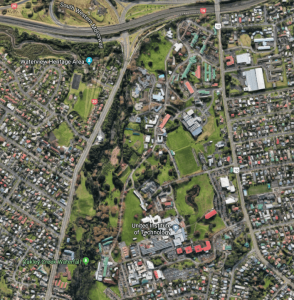 The Unitec Institute of Technology was founded in 1976 on 8.6ha of Crown land accessed from Carrington Rd, Mt Albert. Unitec’s business grew significantly in its first 25 years, and it acquired in 1990 a significant portion of the adjacent land and facilities from the Ministry of Health.
The Unitec Institute of Technology was founded in 1976 on 8.6ha of Crown land accessed from Carrington Rd, Mt Albert. Unitec’s business grew significantly in its first 25 years, and it acquired in 1990 a significant portion of the adjacent land and facilities from the Ministry of Health.
Unitec has a primary focus on vocational training of the associate professional, advanced trades and technology segments of the job market. It is the largest supplier of architecture, construction and computing skills among New Zealand’s Institutes of Technology and Polytechnics, and is New Zealand’s largest institute of technology, and the largest non-university tertiary provider in the Auckland region. Unitec’s existing campus on Carrington Road covers some 53ha with a collection of 177 buildings distributed across the site.
How does it fit into the Auckland Unitary Plan?
The plan is the rulebook for Auckland’s future development, and replaces dozens of old plans and strategies covering everything from environmental and heritage protection, to – contentiously – where higher density housing and urban sprawl will be allowed. It’s the biggest single planning change in Auckland’s history.
The plan process was unique. In an attempt to reduce lengthy delays which often occur, special legislation was enacted to speed the process up – the Local Government (Auckland Transitional Provisions) Act 2010.
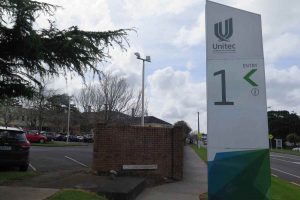 Auckland Council formally “notified” its initial version of the Unitary Plan in September 2013. The public, companies, institutions, and organisation were then able to lodge submissions in support or in opposition to this notified version. The submission period extended to February 2014. These were made public and then further submissions were able to be lodged in June and July 2014.
Auckland Council formally “notified” its initial version of the Unitary Plan in September 2013. The public, companies, institutions, and organisation were then able to lodge submissions in support or in opposition to this notified version. The submission period extended to February 2014. These were made public and then further submissions were able to be lodged in June and July 2014.
An independent hearings panel was created to hear evidence presented in support of submissions. It organised how the hearings worked, determining that breaking down the plan into over 80 topics and hearing them in a particular order was the most effective and efficient way forward. Mediation between submitters and experts, and public hearings, then took place over a period of 20 months (from September 2014 to April 2016) covering every aspect of the plan.
The panel then considered all the evidence (including evidence presented by Auckland Council), and released their recommendations on a final version of the Unitary Plan to Auckland Council in July 2016.
In August 2016 Auckland Council released a final version of the plan, allowing for an appeal period. But appeals were restricted – submitters were only able to appeal on matters where the council did not adopt the recommendations of the panel. Now the Auckland Unitary Plan is largely in place, with outstanding appeals only affecting a minor number of provisions and properties.
What is the ‘Wairaka Precinct’?
“Precincts” are one of the planning tools used within the plan – these are areas which generally sit within part of a zone. While sharing similar characteristics with the zone they enable local differences to be recognised. The zone and Auckland-wide rules provide the basic parameters for development, but precincts and overlays provide an additional layer of regulation where it is necessary to manage particular values or local differences.
Precinct provisions vary the rules of the underlying zone and therefore need to be read in conjunction with the zone. As precinct provisions are more specific they override any more permissive or restrictive provisions in the underlying zone.
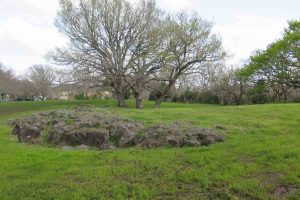 The Wairaka Precinct is located between Pt Chevalier and Mt Albert. Its purpose is to provide for an urban community within which there is a high-quality tertiary education institution. The precinct covers 64.5ha and is located on Carrington Road and comprises the Wairaka Campus of Unitec Institute of Technology (Unitec), the Mason Clinic (Regional Forensic Psychiatry Services) owned by the Waitemata District Health Board, a commercial laundry facility operated by Taylors Laundry Services, and three largely undeveloped lots owned by Ngāti Whātua Ōrākei Trustee Limited. Unitec owns 83% of the land within the precinct.
The Wairaka Precinct is located between Pt Chevalier and Mt Albert. Its purpose is to provide for an urban community within which there is a high-quality tertiary education institution. The precinct covers 64.5ha and is located on Carrington Road and comprises the Wairaka Campus of Unitec Institute of Technology (Unitec), the Mason Clinic (Regional Forensic Psychiatry Services) owned by the Waitemata District Health Board, a commercial laundry facility operated by Taylors Laundry Services, and three largely undeveloped lots owned by Ngāti Whātua Ōrākei Trustee Limited. Unitec owns 83% of the land within the precinct.
Unitec’s submission to the Unitary Plan requested zoning changes for 53.5 hectares of their 64.5 hectare block to allow for a mix of residential, commercial and recreational purposes.
The central argument underpinning Unitec’s submission was that operating out of 177 buildings spread across the site, many of which are not fit for purpose and are very expensive to maintain, was not sustainable.
Unitec also noted that some of the buildings are also a seismic risk. Unitec’s submission to the Unitary Plan was based on a long-term strategy (approved by its governing council) to modernise the educational institution on the Mt. Albert campus and consolidate its campus into 10 hectares at the southern end of its existing site, while also ensuring the remaining land would endow Unitec’s future sustainability.
At the same time, Unitec’s stated aspiration within the submissions was for the Mt Albert site to become a showcase high-quality and sustainable urban redevelopment that would substantially enhance the local community and be a real asset for Auckland.
The submission also argued that the changes would enable provision of cultural and community facilities, new transport connections, public open spaces, conversion of at-grade car-parking into purpose built car-parking buildings, the ability to provide local retail and food and beverage services to complement the existing local centres, in addition to residential intensification of the land.
So what happened?
Because of the technical nature of the process and the lack of need for submitters to consult, Unitec’s submission was not widely known about within the Mt. Albert community until part-way into the “further submission” period (June and July 2014). The Unitec submission was also vast (requesting 255 specific changes to the notified version of the Unitary Plan, within a 177-page document) and predominantly used technical planning and legal jargon.
However, it wasn’t long before word got out, culminating in an open day at the Metro Football Club, where a small group of volunteers helped locals with submissions to responds to Unitec. In the end the council and Unitec received over 200 “further submissions” opposing either some or all of their proposed changes.
Representatives of the local community met on a semi-regular basis with Unitec representatives to discuss concerns over the changes Unitec were seeking to the precinct.
The large number of changes sought by Unitec covered numerous topics throughout the 20-month long process, bringing a range of mediation sessions and hearings and involving the Mt Albert Residents’ Association (MARA) and the Springleigh Residents’ Association.
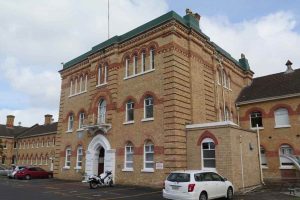 The main parties through mediation agreed to the underlying Special Purpose-Tertiary Education Zone being reduced in size and replaced with residential zones wrapping around the south-western side of the precinct, together with a Business–Mixed Use Zone and Special Purpose–Healthcare Facility and Hospital Zone at the northern end of the precinct. This approach was agreed as these zones better reflected the outcomes sought by the Precinct.
The main parties through mediation agreed to the underlying Special Purpose-Tertiary Education Zone being reduced in size and replaced with residential zones wrapping around the south-western side of the precinct, together with a Business–Mixed Use Zone and Special Purpose–Healthcare Facility and Hospital Zone at the northern end of the precinct. This approach was agreed as these zones better reflected the outcomes sought by the Precinct.
The most significant hearing occurred in February 2016 – evidence on the Wairaka Precinct itself; the rules and controls that will govern the development and use of this large block of land. In preparing for this, MARA was able to raise $10,000 from the local community through a Givealittle campaign to enable a traffic engineer (John Parlane) to be engaged to assess the available evidence. Local environmental lawyer Douglas Allan agreed to represent MARA with legal submissions this precinct hearing, while Craig Magee prepared and presented planning evidence.
The main sticking point through this process was traffic – in particular the effect of opening up of the cul-de-sacs to the south of Unitec (Laurel St, Renton Rd, and Rhodes Ave) on the established residential community, and whether this effect could be appropriately mitigated.
Evidence was presented about the assumptions behind this. In particular arguments were made on what effect future works in the area (such as the opening of the SH20 tunnel) might have on vehicle trips. Evidence was also heard on other aspects of the precinct, such as the amount of land that would be provided as open space (parks), stormwater, building heights, as well as effects on heritage buildings within the precinct and the adjacent Oakley Creek.
And the outcome?
The panel ultimately recommended to Auckland Council that the precinct be supported in relation to likely future road connections.
The panel took the view that the development of the precinct needs to integrate and support the transport network. By setting direction and limitations through the activity table, and the provision of the integrated transport assessment, the panel was satisfied that the connections can be appropriately managed.
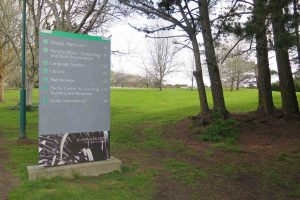 Another issue was the absence of an Integrated Transport Assessment (an ITA) being presented in evidence. The panel was, however, satisfied that the transport effects of development in the precinct were well understood based on the evidence of Unitec, Mt Albert Residents’ Association and council.
Another issue was the absence of an Integrated Transport Assessment (an ITA) being presented in evidence. The panel was, however, satisfied that the transport effects of development in the precinct were well understood based on the evidence of Unitec, Mt Albert Residents’ Association and council.
Through the identification of varying types of connections in the precinct activity table, and the special information requirements of an ITA, development proposals would be assessed against policies and criteria. These provisions were considered by the panel to be appropriate for considering effects such as through precinct traffic, overflow car parking and the operation of the surrounding transport network.
The panel also considered that the provision of open space in the precinct would be adequate for future needs and is supported by criteria to consider any proposed variances from what is provided in the precinct plan.
Shortly afterwards, Auckland Council released their decisions on the panel recommendations for the Wairaka Precinct (the Unitec site) and the rest of the Unitary Plan. The council accepted the recommendations of the hearing panel for the precinct without any changes and as such there were no appeal rights to the Environment Court.
While the precinct has been enabled for development; public opening of the roads to the south (Renton, Rhodes and Laurel) needs resource consent and the council will have to assess who would be affected.
Before this, however, Unitec may choose to create a private road which can also be opened to the roads to the south, but the consent process for that would not involve the adjacent community.
Any development on the precinct (buildings, subdivision) will require an ITA, which includes the provision of walking, cycling, vehicle and public transport modes. Additionally, after two years, any resource consent applications for further development will need an updated ITA.
What happens next?
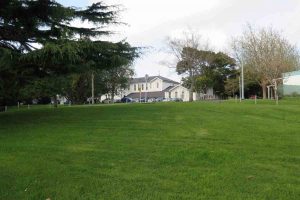 Now that the precinct has been “enabled”, the future rests largely in the hands of the landowners. Unitec has established the Wairaka Land Company (WLC) Limited as a wholly-owned special purpose vehicle to implement its property strategy. Ngāti Whātua Ōrākei Whai Rawa Limited is the Ngāti Whātua development arm which will look to develop the iwi’s smaller land blocks adjacent to Oakley Creek.
Now that the precinct has been “enabled”, the future rests largely in the hands of the landowners. Unitec has established the Wairaka Land Company (WLC) Limited as a wholly-owned special purpose vehicle to implement its property strategy. Ngāti Whātua Ōrākei Whai Rawa Limited is the Ngāti Whātua development arm which will look to develop the iwi’s smaller land blocks adjacent to Oakley Creek.
MARA intends to continue to take part an active part in Unitec’s community engagement processes. Although Unitec has announced that the established community liaison group will no longer meet (as this was specifically for the Unitary Plan process), they are developing alternative engagement processes.
MARA seeks to work constructively with Unitec but will continue to push for transparency over any development taking place within the precinct.

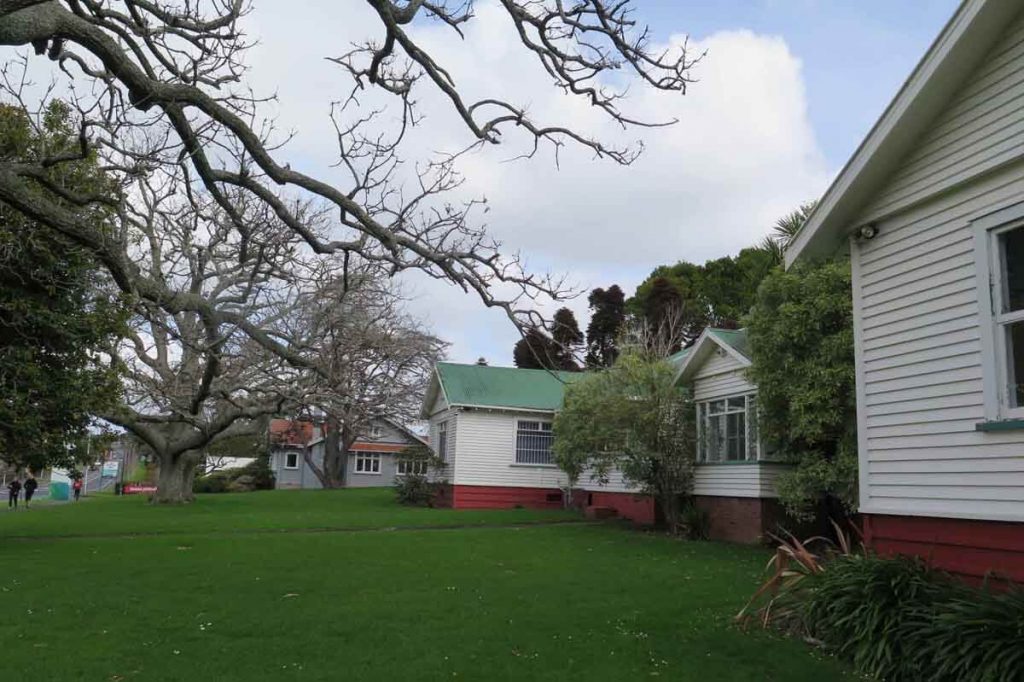
 The Unitec Institute of Technology was founded in 1976 on 8.6ha of Crown land accessed from Carrington Rd, Mt Albert. Unitec’s business grew significantly in its first 25 years, and it acquired in 1990 a significant portion of the adjacent land and facilities from the Ministry of Health.
The Unitec Institute of Technology was founded in 1976 on 8.6ha of Crown land accessed from Carrington Rd, Mt Albert. Unitec’s business grew significantly in its first 25 years, and it acquired in 1990 a significant portion of the adjacent land and facilities from the Ministry of Health. Auckland Council formally “notified” its initial version of the Unitary Plan in September 2013. The public, companies, institutions, and organisation were then able to lodge submissions in support or in opposition to this notified version. The submission period extended to February 2014. These were made public and then further submissions were able to be lodged in June and July 2014.
Auckland Council formally “notified” its initial version of the Unitary Plan in September 2013. The public, companies, institutions, and organisation were then able to lodge submissions in support or in opposition to this notified version. The submission period extended to February 2014. These were made public and then further submissions were able to be lodged in June and July 2014. The Wairaka Precinct is located between Pt Chevalier and Mt Albert. Its purpose is to provide for an urban community within which there is a high-quality tertiary education institution. The precinct covers 64.5ha and is located on Carrington Road and comprises the Wairaka Campus of Unitec Institute of Technology (Unitec), the Mason Clinic (Regional Forensic Psychiatry Services) owned by the Waitemata District Health Board, a commercial laundry facility operated by Taylors Laundry Services, and three largely undeveloped lots owned by Ngāti Whātua Ōrākei Trustee Limited. Unitec owns 83% of the land within the precinct.
The Wairaka Precinct is located between Pt Chevalier and Mt Albert. Its purpose is to provide for an urban community within which there is a high-quality tertiary education institution. The precinct covers 64.5ha and is located on Carrington Road and comprises the Wairaka Campus of Unitec Institute of Technology (Unitec), the Mason Clinic (Regional Forensic Psychiatry Services) owned by the Waitemata District Health Board, a commercial laundry facility operated by Taylors Laundry Services, and three largely undeveloped lots owned by Ngāti Whātua Ōrākei Trustee Limited. Unitec owns 83% of the land within the precinct. The main parties through mediation agreed to the underlying Special Purpose-Tertiary Education Zone being reduced in size and replaced with residential zones wrapping around the south-western side of the precinct, together with a Business–Mixed Use Zone and Special Purpose–Healthcare Facility and Hospital Zone at the northern end of the precinct. This approach was agreed as these zones better reflected the outcomes sought by the Precinct.
The main parties through mediation agreed to the underlying Special Purpose-Tertiary Education Zone being reduced in size and replaced with residential zones wrapping around the south-western side of the precinct, together with a Business–Mixed Use Zone and Special Purpose–Healthcare Facility and Hospital Zone at the northern end of the precinct. This approach was agreed as these zones better reflected the outcomes sought by the Precinct. Another issue was the absence of an Integrated Transport Assessment (an ITA) being presented in evidence. The panel was, however, satisfied that the transport effects of development in the precinct were well understood based on the evidence of Unitec, Mt Albert Residents’ Association and council.
Another issue was the absence of an Integrated Transport Assessment (an ITA) being presented in evidence. The panel was, however, satisfied that the transport effects of development in the precinct were well understood based on the evidence of Unitec, Mt Albert Residents’ Association and council. Now that the precinct has been “enabled”, the future rests largely in the hands of the landowners. Unitec has established the Wairaka Land Company (WLC) Limited as a wholly-owned special purpose vehicle to implement its property strategy. Ngāti Whātua Ōrākei Whai Rawa Limited is the Ngāti Whātua development arm which will look to develop the iwi’s smaller land blocks adjacent to Oakley Creek.
Now that the precinct has been “enabled”, the future rests largely in the hands of the landowners. Unitec has established the Wairaka Land Company (WLC) Limited as a wholly-owned special purpose vehicle to implement its property strategy. Ngāti Whātua Ōrākei Whai Rawa Limited is the Ngāti Whātua development arm which will look to develop the iwi’s smaller land blocks adjacent to Oakley Creek.